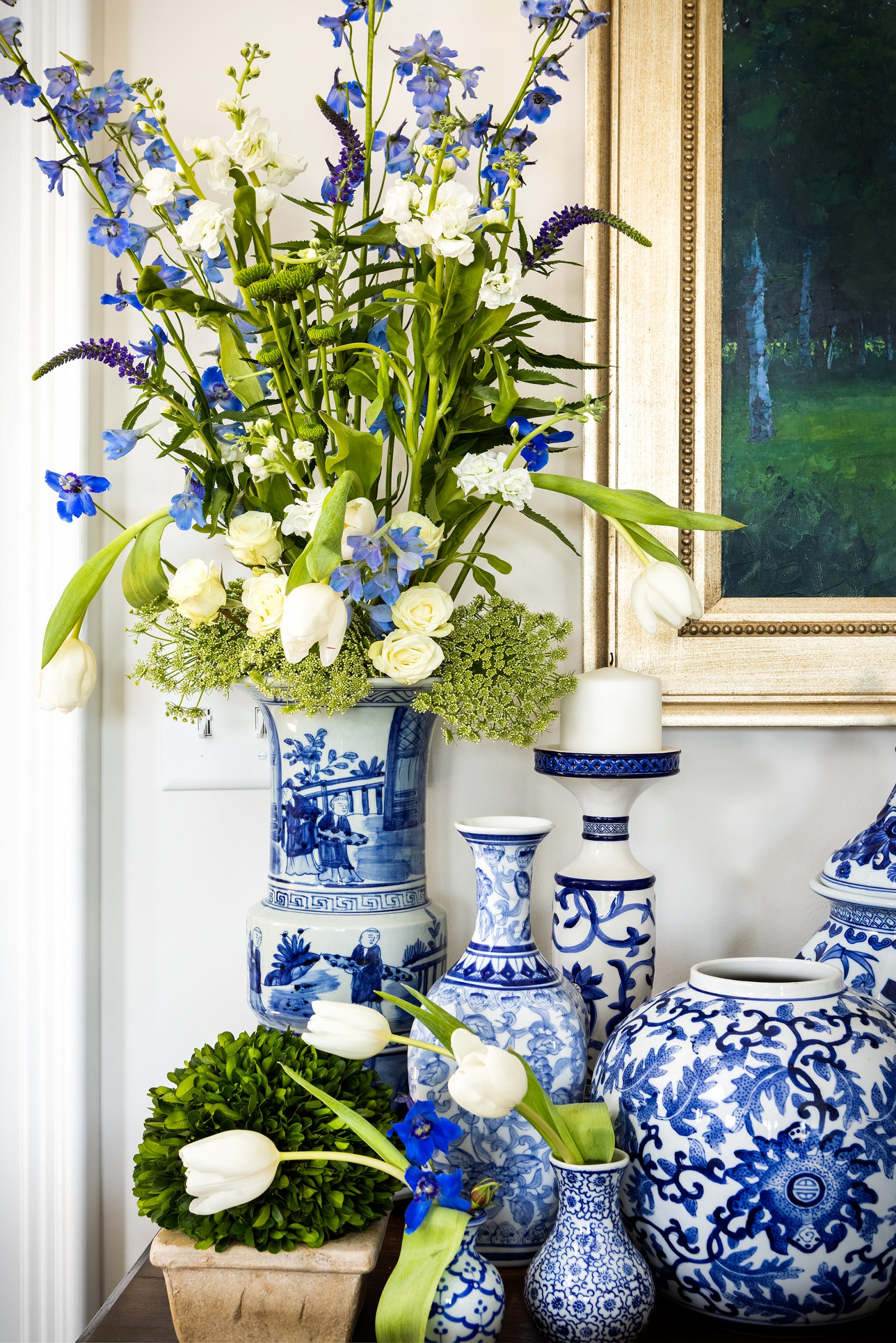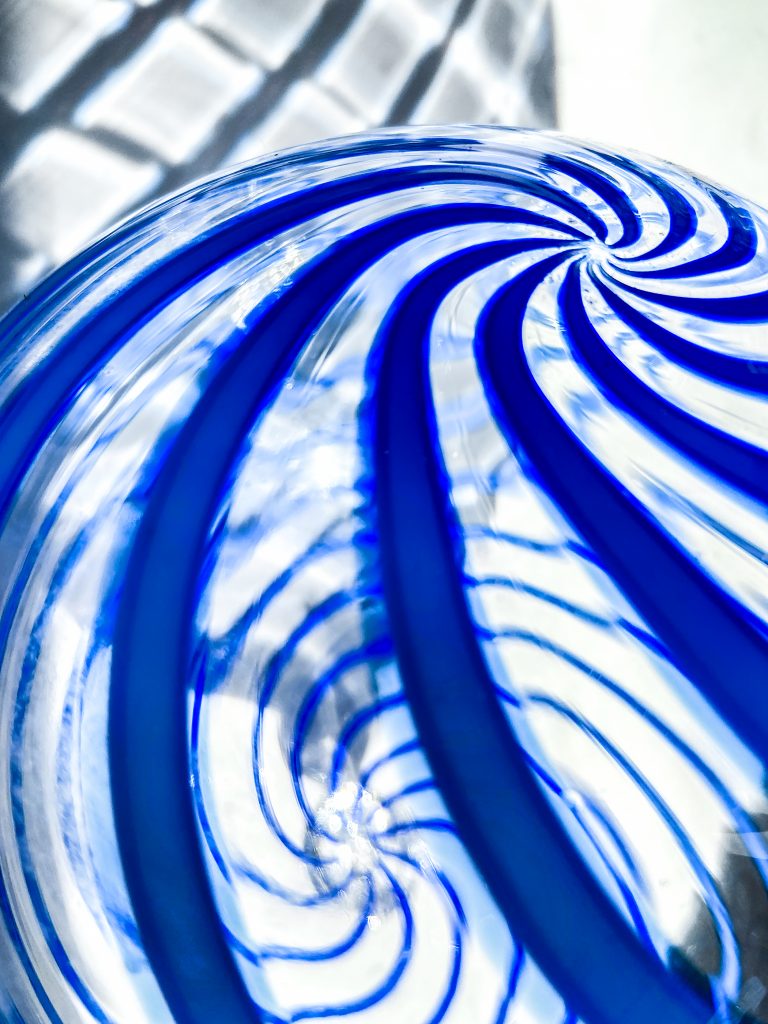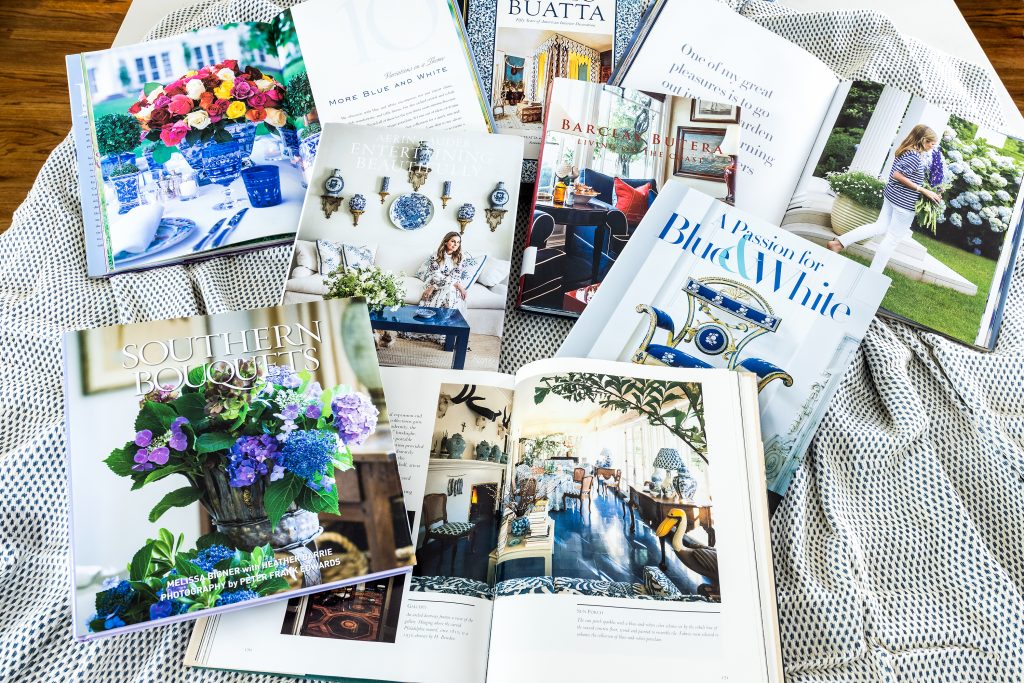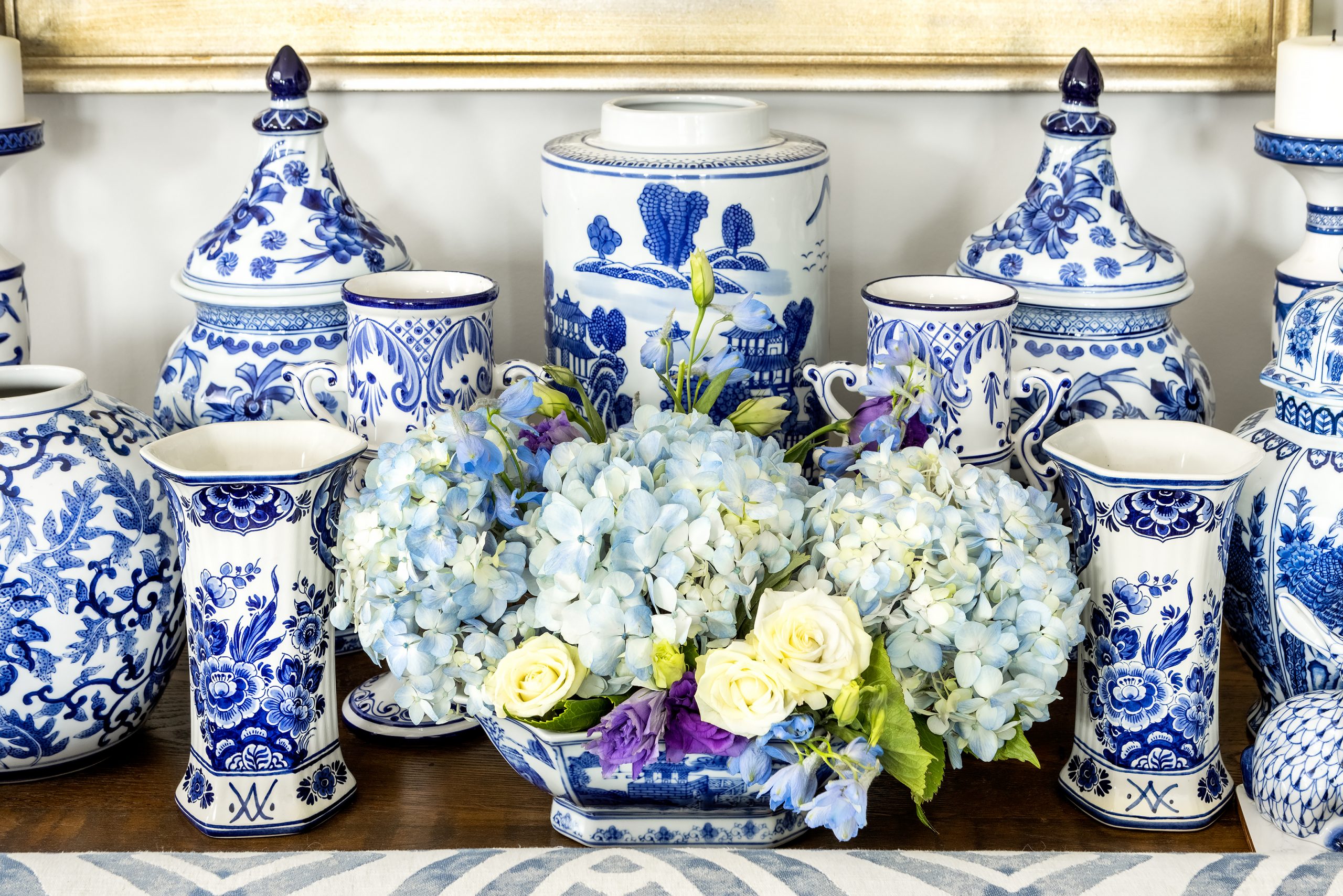
A room done entirely in blue and white has a universal appeal; it is one color pairing that never goes out of style. It is easy to pull together as a collection of blues do not need to match one another. Incorporating pops of color to a blue and white scheme, in this case lime green with small touches of purple, is a great way to add accents with artwork, flowers, or pillows — make a statement!
What do you picture when you hear the phrase “blue and white”? Whitecaps on the ocean? The sky and clouds? A beautiful piece of Chinese porcelain? From the ancient Egyptians, who invented the first synthetic pigment for blue, to the most recent Serena and Lily catalog fresh from coastal California, blue and white is the hands down winner for perennial popularity. Since this combination has been popular since basically the beginning of time, entire libraries house books devoted to studies of the different uses of blue and white, including ceramics, fabrics, flowers, interior designs, and landscapes. Anything that can be made in blue and white has a shelf of books about it or a slew of websites devoted to it.
Blue and white has been “new” and “fresh” and a global sensation since about the 600s when blue and white pottery was first produced in China during the Tang dynasty. Blue and white ceramics from China have been an aesthetic and economic success from the earliest trading days when the two main elements of blue and white — the white porcelain from China and the cobalt oxide from Persia — came together via the Silk Road.
Think of the Silk Road trade as the “big bang” that started the universe of blue and white. Each successive country that imported the “new” and “novel” blue and white porcelain went crazy for it. Since trade was very dangerous until the modern era and since China was far away — especially via camel — these goods were very sought after and thus very expensive. Where blue and white ware was traded, great wealth followed. The strong, white porcelain that was unique to China for hundreds of years came into production around 1300 in the Yuan dynasty when the potters in Jiangxi Province first added local kaolin clay to the pottery recipe. The addition of kaolin, along with improved firing processes, produced a white ceramic that wasn’t available anywhere else in the world. Centuries later, kaolin clay was actually found in Richland and Lexington counties as well as other parts of South Carolina and was once exported from our state to the workshops of Josiah Wedgwood for his iconic blue and white ware.
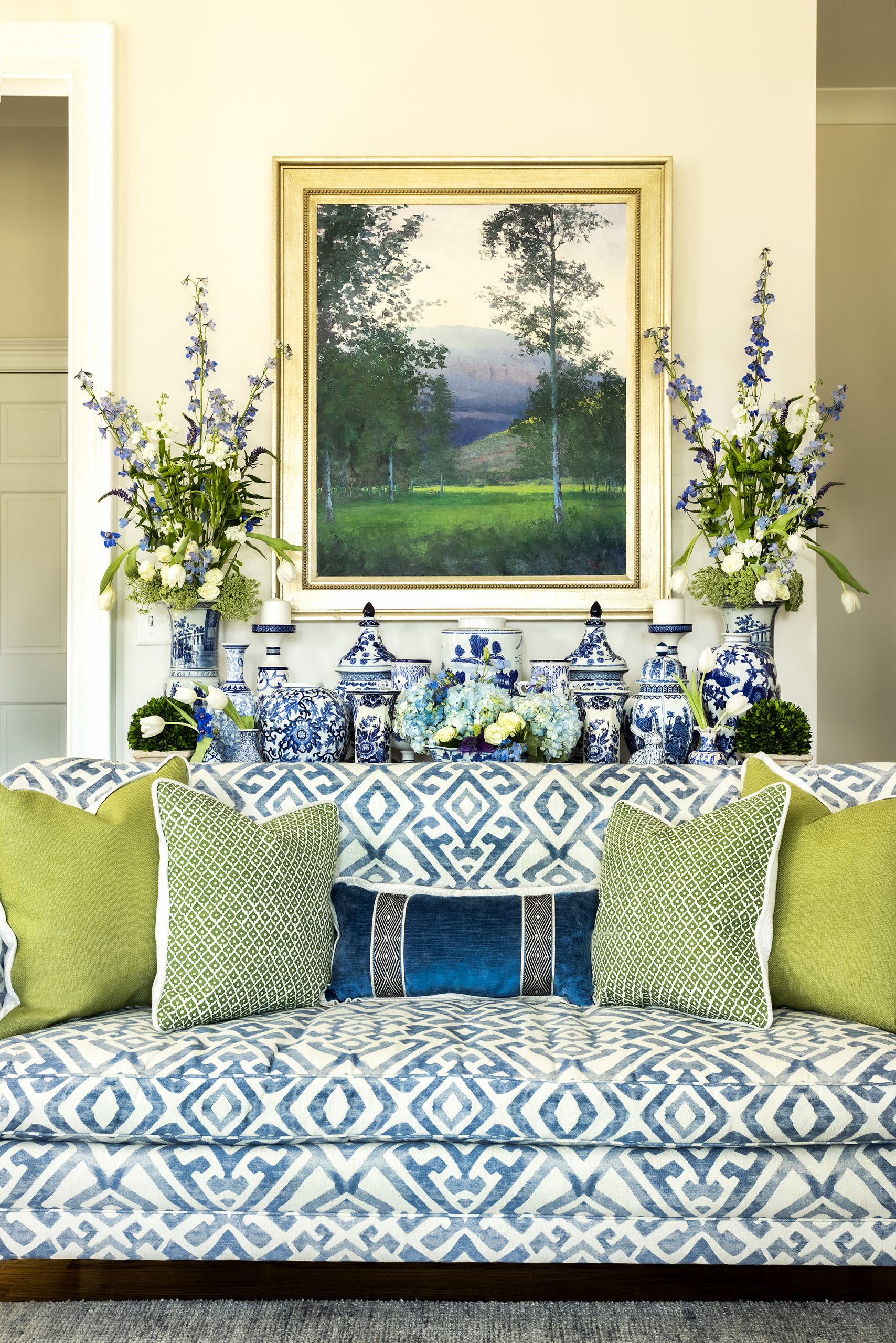
Each culture that has imported blue and white ware has influenced the export production made in China as well as the local production made in the home country. The Chinese potters produced objects for export that were specific to the needs and taste of the destination country. The potters in the destination country in turn designed pieces to imitate the Chinese porcelain. The first participants were the Middle Eastern traders along the Silk Road who brought Chinese ceramics to their markets. The local demand for Chinese ceramics was too great to be met with actual Chinese ceramics, so potters in the Turkish city of Iznik began making their own versions of blue and white ceramics that date back centuries.
These became so popular in their own right that these designs are still in production. Next came the Portuguese trade with China, which resulted in the local product called majolica which can be seen today in the tiles that cover the capital city of Lisbon. Spain, being in close contact with Portugal, jumped into the trading game and, as a result, developed its own tradition of blue and white majolica that was then exported to Mexico. In Mexico, the tradition took yet another local turn and developed into the Talavera ware that continues to be a signature product of Mexico.
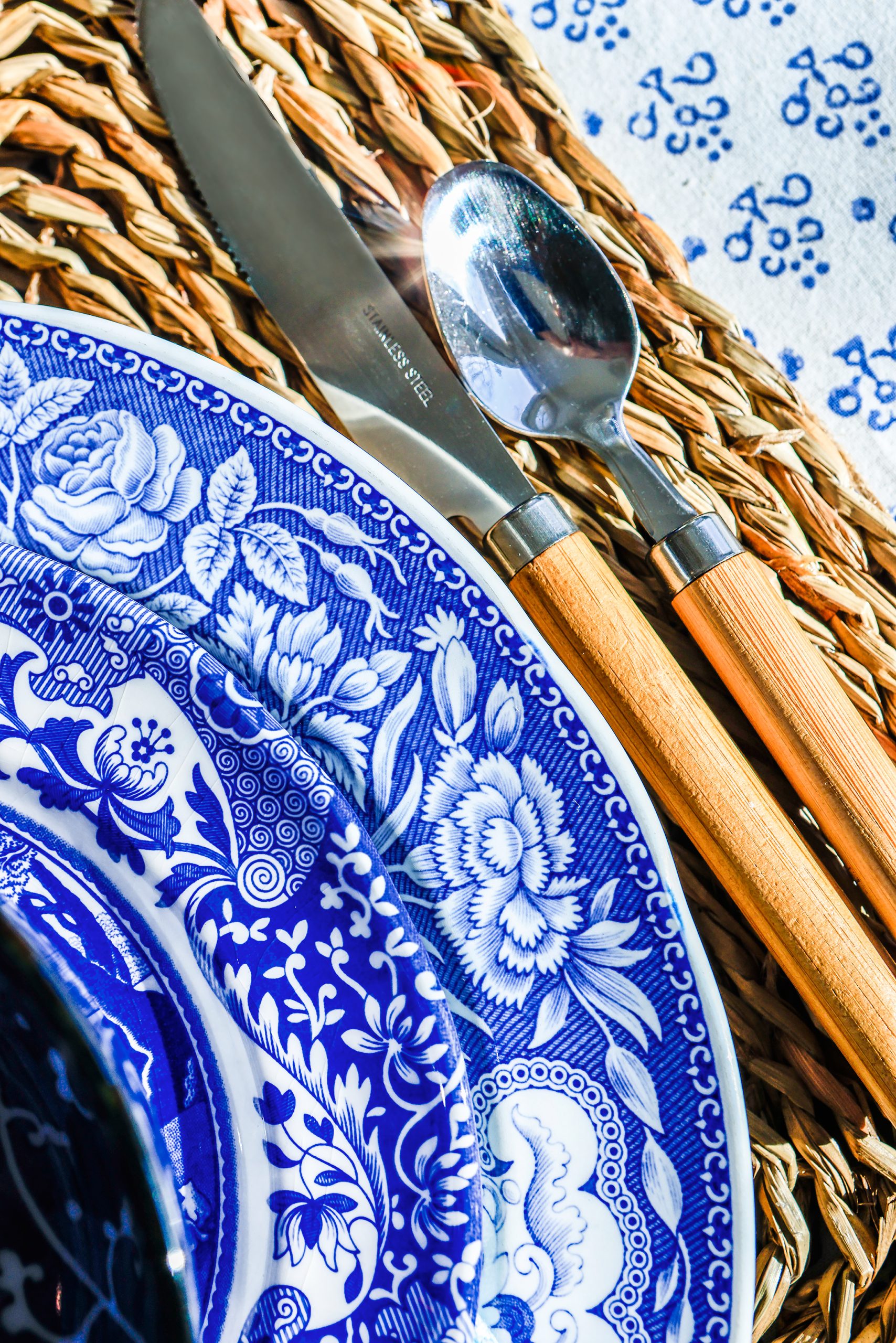
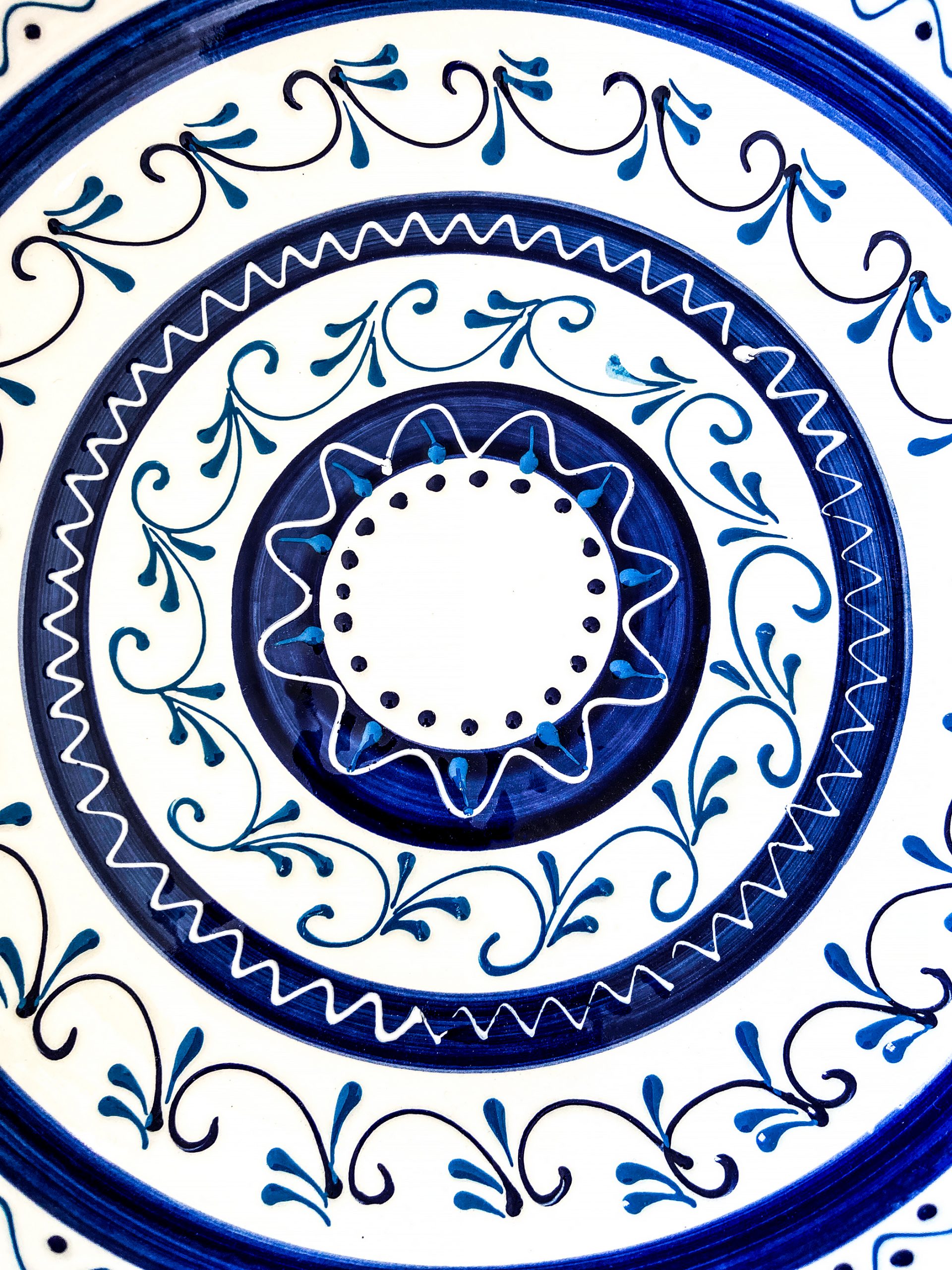
Continuing through the years, the story is repeated in the Netherlands, home to the Dutch East India Company, which commissioned and imported shipload after shipload of blue and white porcelain from China. The manufacture of Delft blue pottery is a tradition that developed from the China trade that is still going strong today. Following the Dutch East India Company, the East India Company based in Britain imported many more shiploads of blue and white porcelain to England, where that trade ultimately inspired the Spode, Wedgwood, Minton, and Johnson Brothers companies to produce iconic patterns like Blue Willow and others that are still in production. Japan and Korea have their own traditions of blue and white ware that are offshoots of trade with their neighbor, and we haven’t even touched on the middle European manufacture of blue and white goods in places like Meissen, Herend, and Dresden.
Blue and white fabric has a similar story to blue and white ceramics. The original source of blue color for fabric is the tropically grown indigo plant, which was very labor intensive and thus expensive to produce. Due to the tremendous cost, indigo dye was only available as a practical matter for royalty and aristocracy.
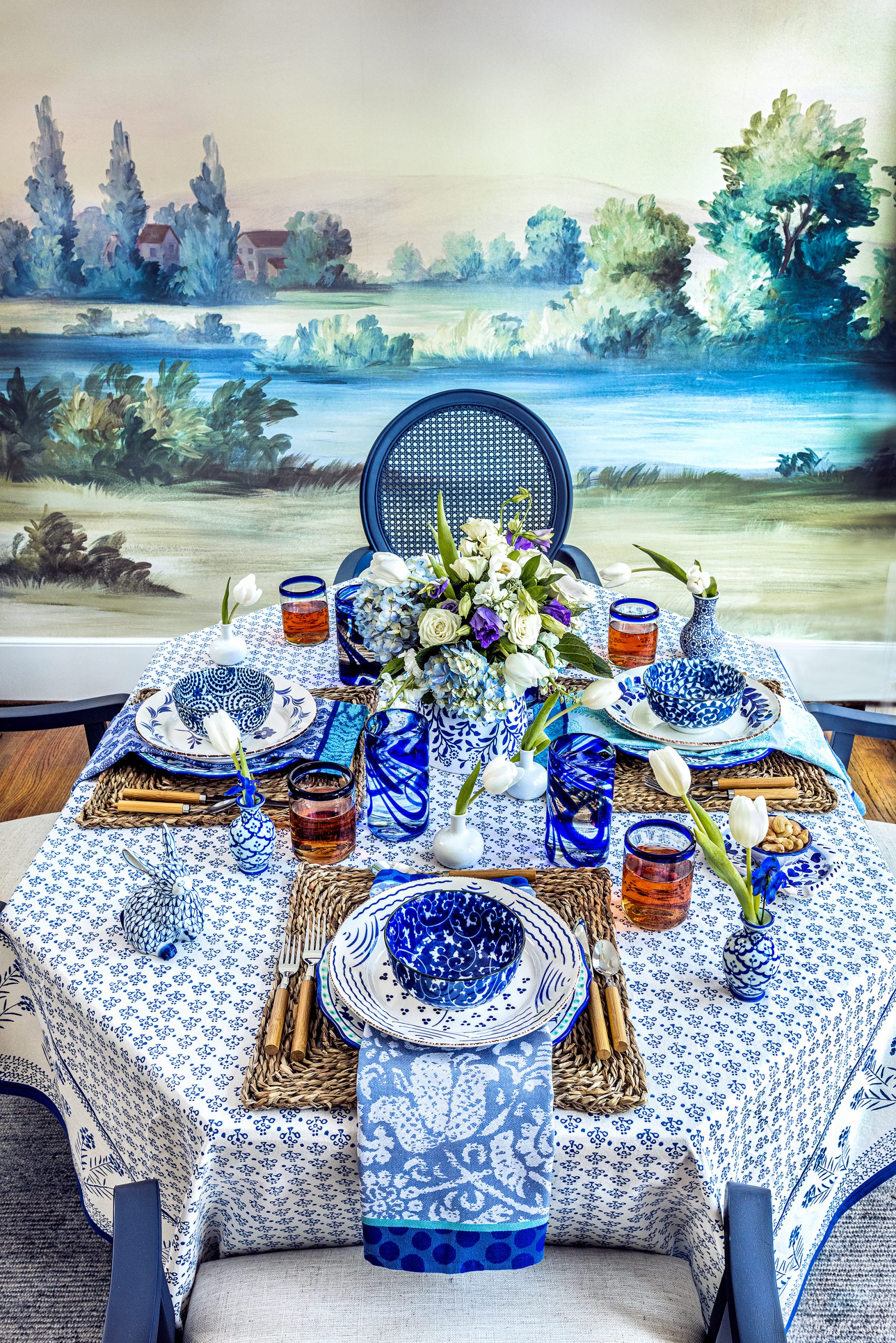
Of course, just like in the ceramic world, anything that’s beautiful and rare and reserved for royalty is something that is then sought after by everyone, so there was a worldwide push to produce indigo and reap the profits of the valuable crop. South Carolina was briefly a major producer of indigo dye during the decades just before and after the Revolutionary War. South Carolina exported its peak production of more than a million pounds of indigo dye cakes to England in 1775.
For a quick overview of both the global nature and the timelessness of the popularity of blue and white fabric, think of batiks from Bali, Shibori and Ikat fabrics from Japan, Toile de Jouy from France, overshot coverlets from Colonial America, and our own iconic blue jeans, and you get the idea that this combination has a popularity that spans the globe, a wide variety of aesthetics, and hundreds of years.
In addition to the provenance of these ceramics and fabrics, we can also trace some of the iconic style settings and places in which they have been used. The ceramics have been collected and displayed as marks of wealth and taste starting with Chinese palaces during the Ming dynasty; moving west, the Hapsburgs’ royal palace in Vienna, Schoenbrunn, contains an East Asian Cabinet and Blue Chinese Salon designed for Marie Antoinette’s mother, Maria Theresa. Photographs of these amazing rooms indicate that Marie Antoinette came by her love of excess honestly indeed. From Vienna, we leap to the Peacock Room in London, commissioned as a dining room by the wealthy shipping magnate Frederick Leyland to display his collection of Chinese ceramics.
The room was famously decorated by the artist James McNeill Whistler in the late 1870s and is currently on display at the Freer Gallery, which is part of the Smithsonian in Washington, D.C. Moving into the last century, the makeup pioneer Estee Lauder had a well-known collection of blue and white ware that she displayed prominently in her home where she entertained regularly. The collection is now owned by her granddaughter, Aerin Lauder, who displays her grandmother’s collection in her books on decor and entertaining.
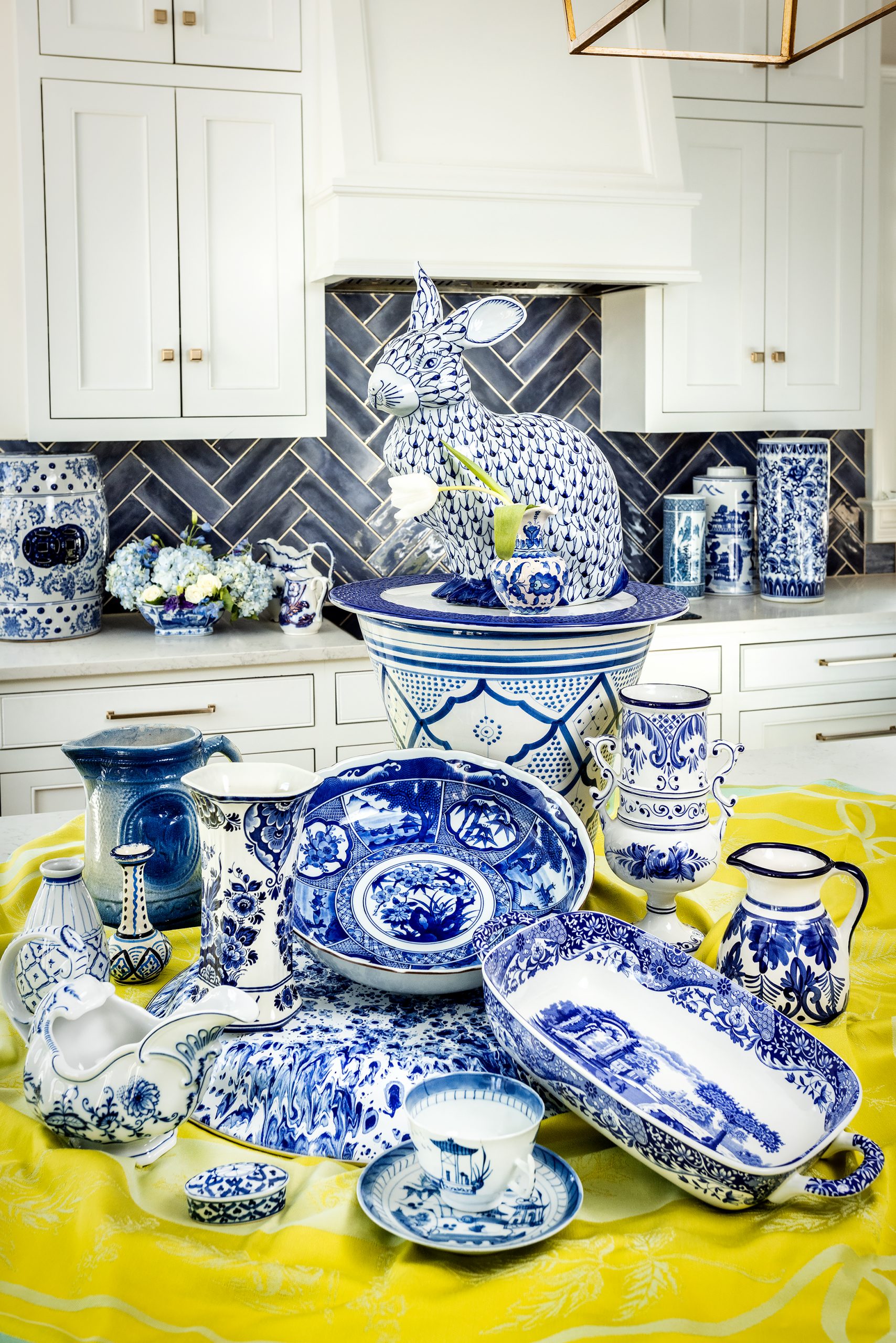
In the 21st century, enjoying blue and white in your daily life doesn’t require being royal or wealthy or even famous. An actual Ming vase might be a bit out of reach, but brand-new pieces that look a lot like a Ming vase (if you don’t put your glasses on) and that serve the same decorative function are made and sold every day of the week in just about every country on the planet. A room done entirely in blue and white always has a certain serene appeal, but if sticking solely to the blue and white palette isn’t your cup of tea, then a single piece of blue and white in a room can add a moment of calm in the midst of a colorful scheme or a point of interest in a neutral scheme. Choose just about any book on interior design from just about any century, and you will find a bit of blue and white scattered among the pages.
Why is blue and white always right? I really don’t know, but maybe it’s because those are the colors we see when we look toward Heaven.
